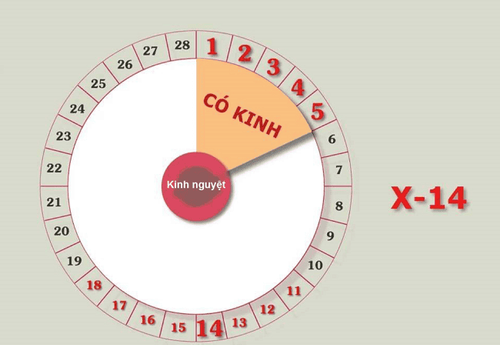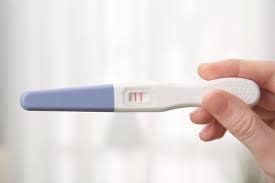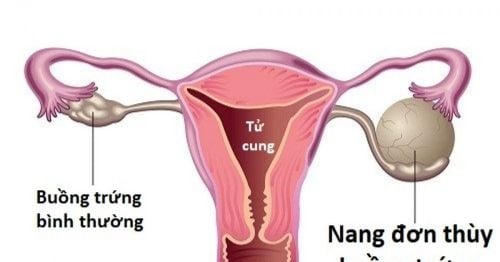This is an automatically translated article.
Menstrual cycle plays a very important role in a woman's reproductive health. In particular, for those who have regular periods, this is also the golden key to help them rely on their menstrual cycle to effectively prevent pregnancy, avoiding situations that go against their wishes.
1. The process of the menstrual cycle
Menstrual cycle is a natural physiological phenomenon in women from the time of puberty until menopause. Accordingly, due to a sudden drop in the levels of the two hormones estrogen or progesterone, a woman's uterus will have periodic bleeding.
Due to the harmonious coordination of activities, the order of the reproductive endocrine system includes: hypothalamus, pituitary gland, and ovaries, which cycle regularly. Once the operation of this process is disturbed, it will cause menstrual disorders affecting the reproductive health of women.
The menstrual cycle in women usually takes place at the beginning of puberty, around 12 - 17 years old (there are also cases earlier) and ends at menopause, about 45 - 55 years old. Each of these cycles is divided into two sub-cycles: the ovarian cycle (which refers to changes taking place in the ovaries) and the uterine cycle (which refers to changes that take place in the uterus). Changes in hormone levels in the body are the factors that control the menstrual cycle.
The first day of bleeding will be counted as the first day of the period. The cause of this phenomenon is due to the decrease in hormone levels causing the endometrial layer to shed. When the last day of bleeding ends, estrogen levels will gradually increase to thicken the sloughed endometrium and stimulate follicle growth. At this time, there will be a few follicles that will outgrow, they wait for the LH hormone to spike so that it can be released and ovulation takes place.
In 24 hours after ovulation, the hormone progesterone is produced in large amounts to change the endometrium, thereby helping the embryo to implant, also known as the process of conception. In case the embryo cannot implant in the endometrium or fertilization does not take place, the levels of progesterone and estrogen will drop sharply in preparation for the menstrual period - the last days of the menstrual cycle.

Trong bảng tính chu kỳ kinh nguyệt thì ngày đầu tiên ra máu là ngày đầu của chu kỳ
2. How to know the menstrual cycle is safe for contraception?
Normally, the menstrual cycle in women will last about 28-32 days. Ovulation usually falls on the middle of the month (day 14, 15 of the cycle). For conception, this cycle will be divided into 3 times: relative safety, absolute safety and danger. Accordingly, the method of calculating contraceptive days based on the menstrual cycle is as follows:
Relatively safe sex time (relative contraception): This period is counted from the first day of the menstrual cycle, also known as is the first day of menstruation until the 9th day of the period. If having sex during this menstrual cycle, the possibility of pregnancy is extremely low, to be safer, we should use condoms.
Time of dangerous sex (easy to get pregnant): The period considered easy to get pregnant (dangerous in sex for those who want to avoid pregnancy) will count from the day of ovulation plus or minus 5 more days before and after. In women with regular menstrual cycles, ovulation will be the middle of the month (day 14, 15 of the cycle) and from 10 to 20 is considered the most fertile period. Therefore, when having sex during this time, the chance of pregnancy will be over 90%. Therefore, we are required to use contraception if having sex during these days to avoid unwanted pregnancy.
When the menstrual cycle is safe for contraception: This period is counted from the 20th day to the first day of the menstrual cycle. Therefore, for women who wonder if it's close to the menstrual cycle to get pregnant, the answer is that we can rest assured because this is the time when the egg has been released, so it will not be possible to conceive. Therefore, for those who are not mentally prepared to be a mother, this is considered a safe time to have sex. For most women, the method of calculating the date of birth control based on the menstrual cycle is widely used because it is a safe and inexpensive method. However, this method should only be applied to the majority of women with regular menstrual cycles because it still has many limitations leading to the risk of unwanted pregnancy:
For those with menstrual cycles The menstrual cycle is irregular, the cycle can range from a few days to a week, even for many people up to half a month, so it will be difficult to calculate the exact day of ovulation. In some cases, the menstrual cycle does not ovulate, ovulates at any time, there are many ovules released in a cycle, ... so the probability of correct ovulation is not high.

Bảng tính chu kỳ kinh nguyệt ở phụ nữ
In order to help customers detect gynecological diseases, Vinmec International General Hospital has a basic gynecological examination and screening package, helping customers to detect early infectious diseases for easy treatment, inexpensive. Screening detects gynecological cancer (cervical cancer) early even when there are no symptoms.
Basic gynecological examination and screening package for female customers, has no age limit and may have the following symptoms:
Abnormal vaginal bleeding Having menstrual problems: irregular menstrual cycle, irregular menstrual cycle Irregular vaginal discharge (smell, different color) Vaginal pain and itching Female clients have several risk factors such as poor personal hygiene, Unsafe sex, abortion,... Female customers have other symptoms such as: Abnormal vaginal discharge, itching, pain in the private area, abnormal vaginal bleeding.
Please dial HOTLINE for more information or register for an appointment HERE. Download MyVinmec app to make appointments faster and to manage your bookings easily.













